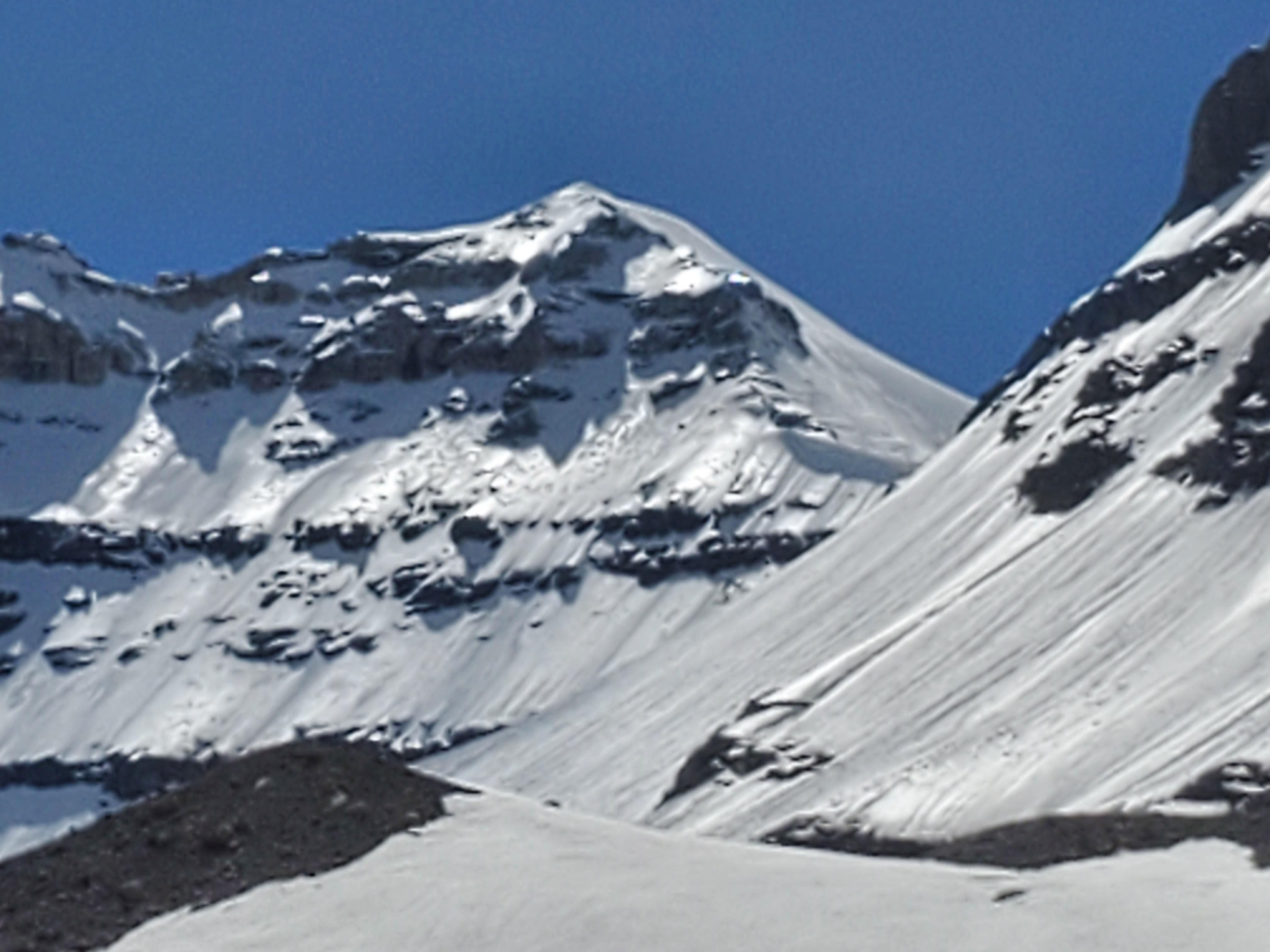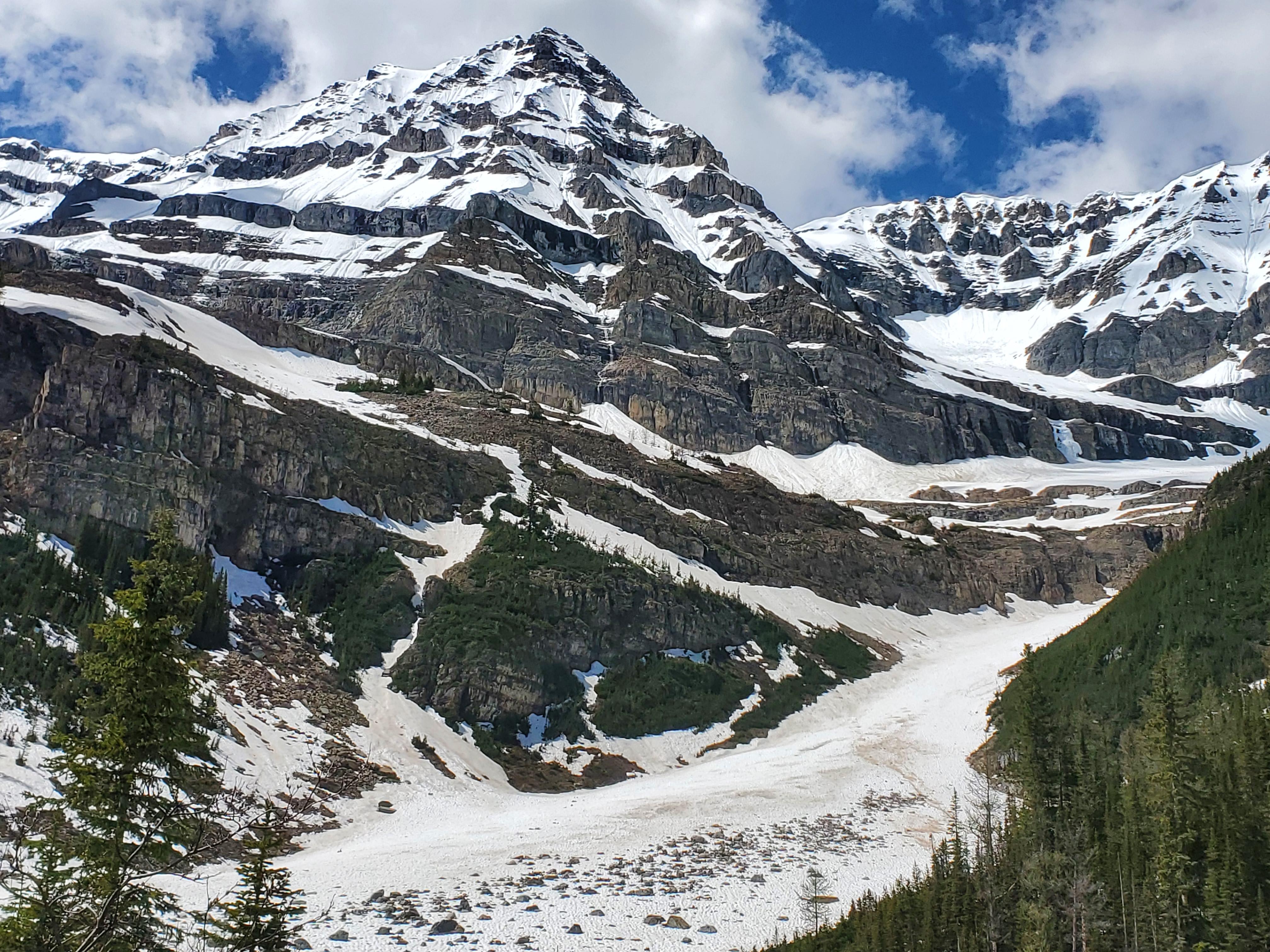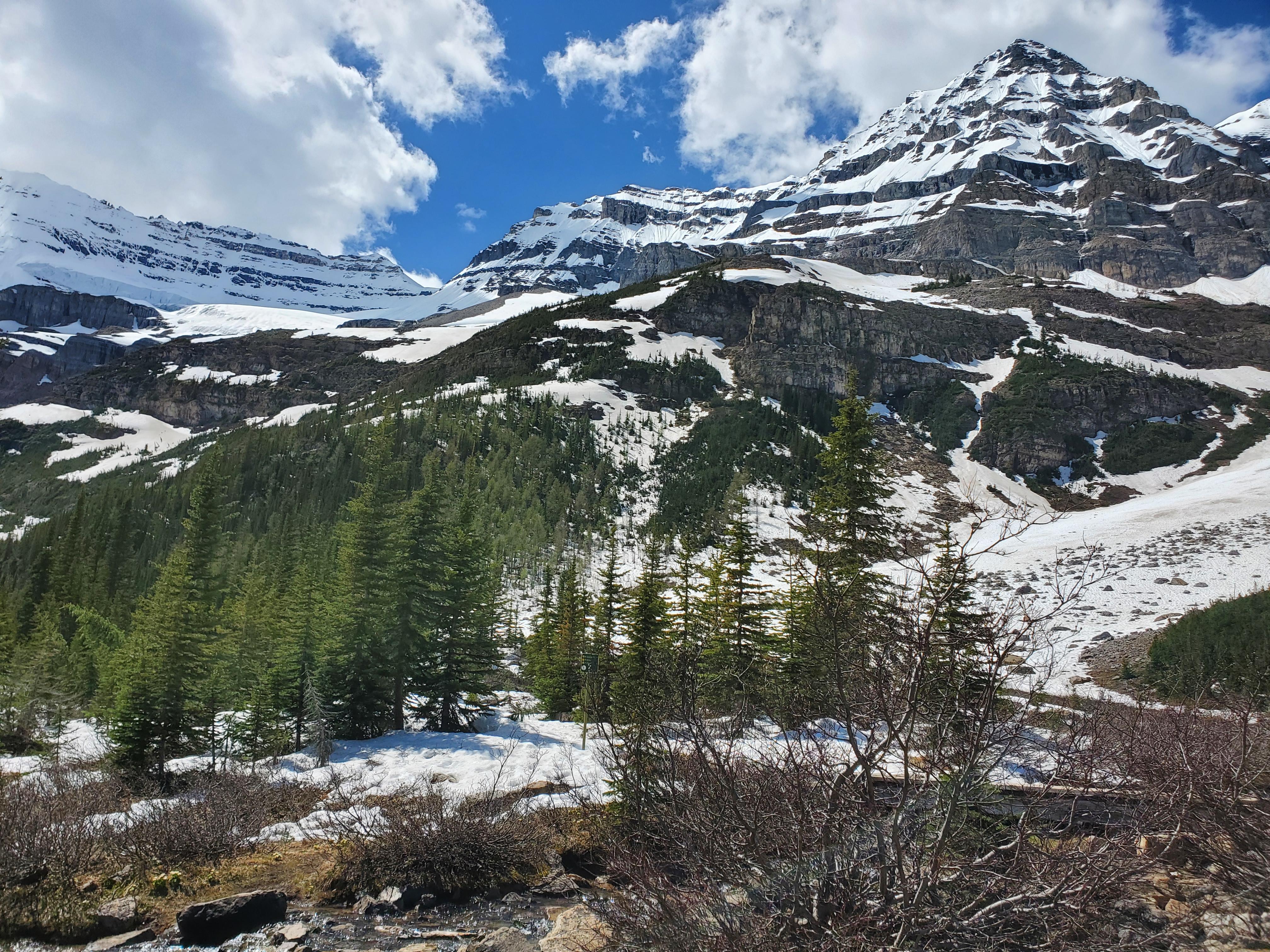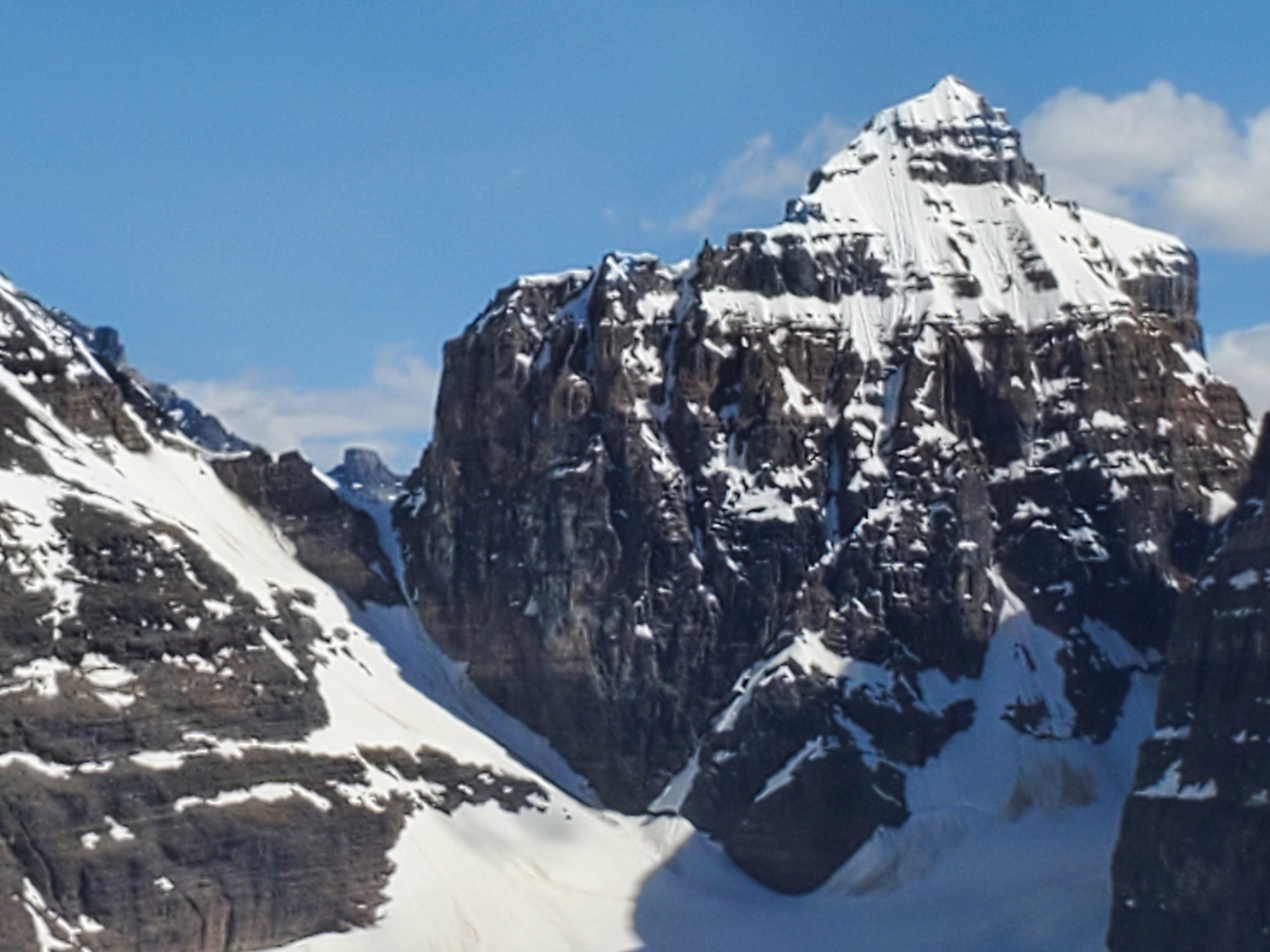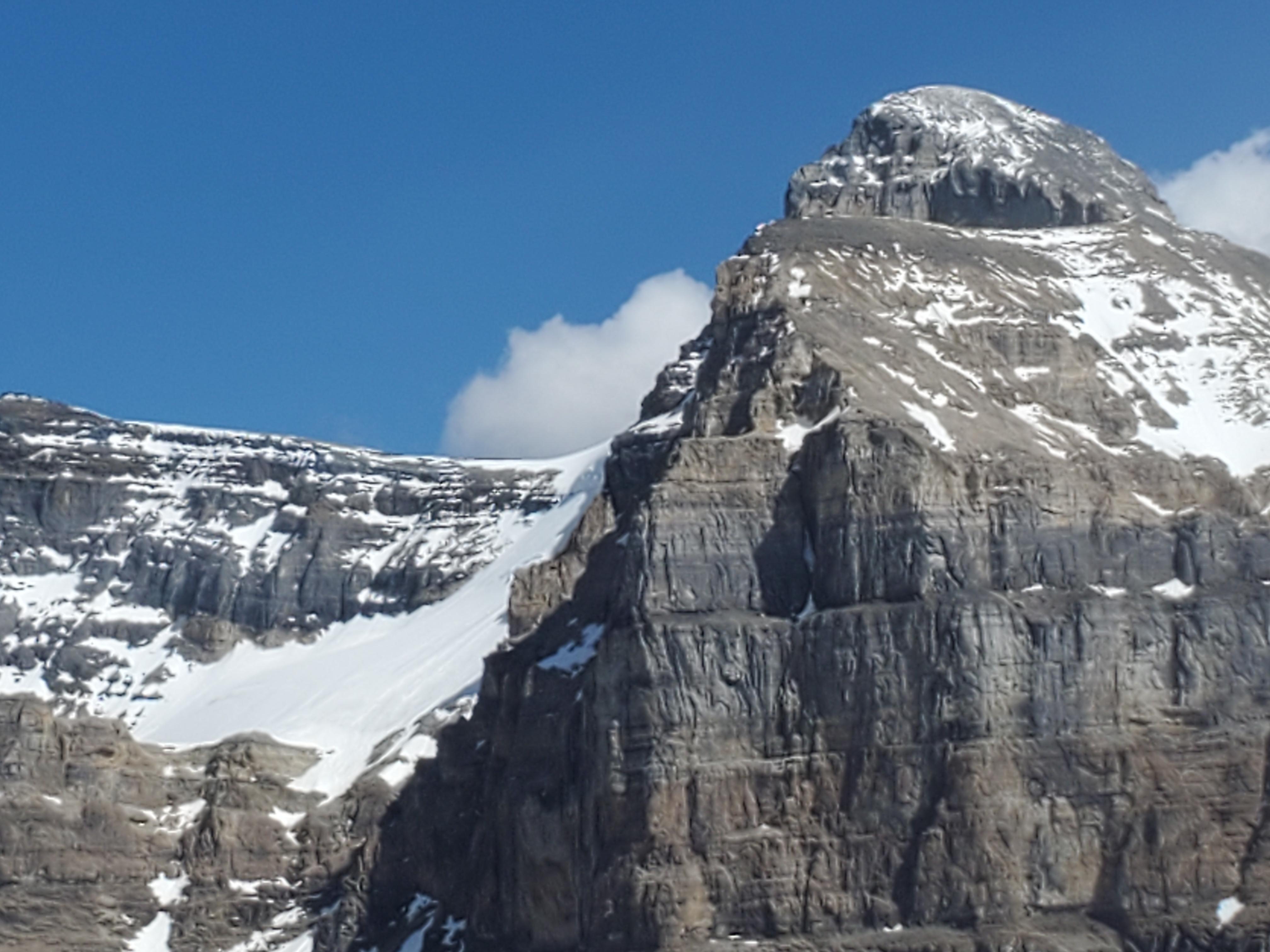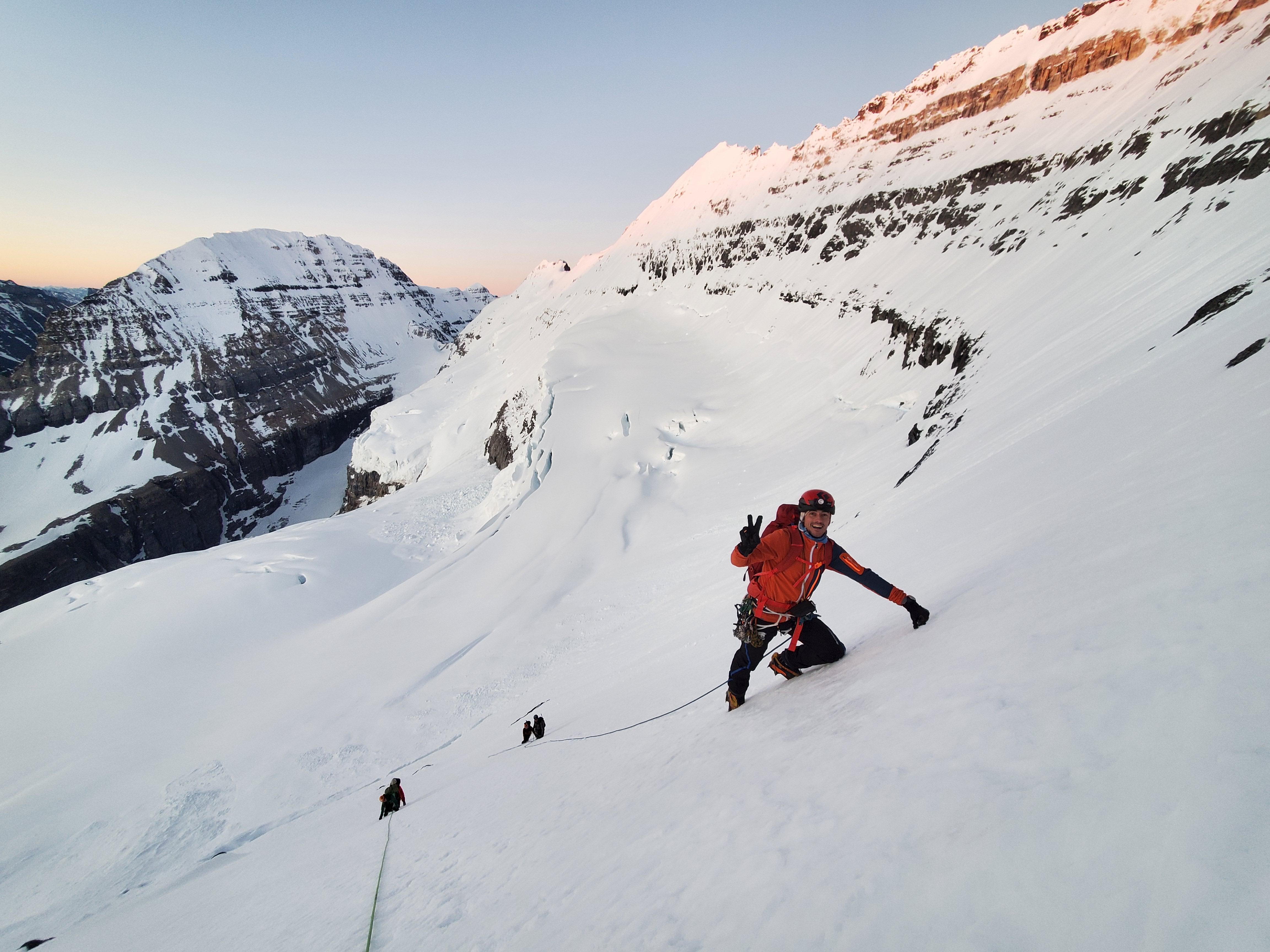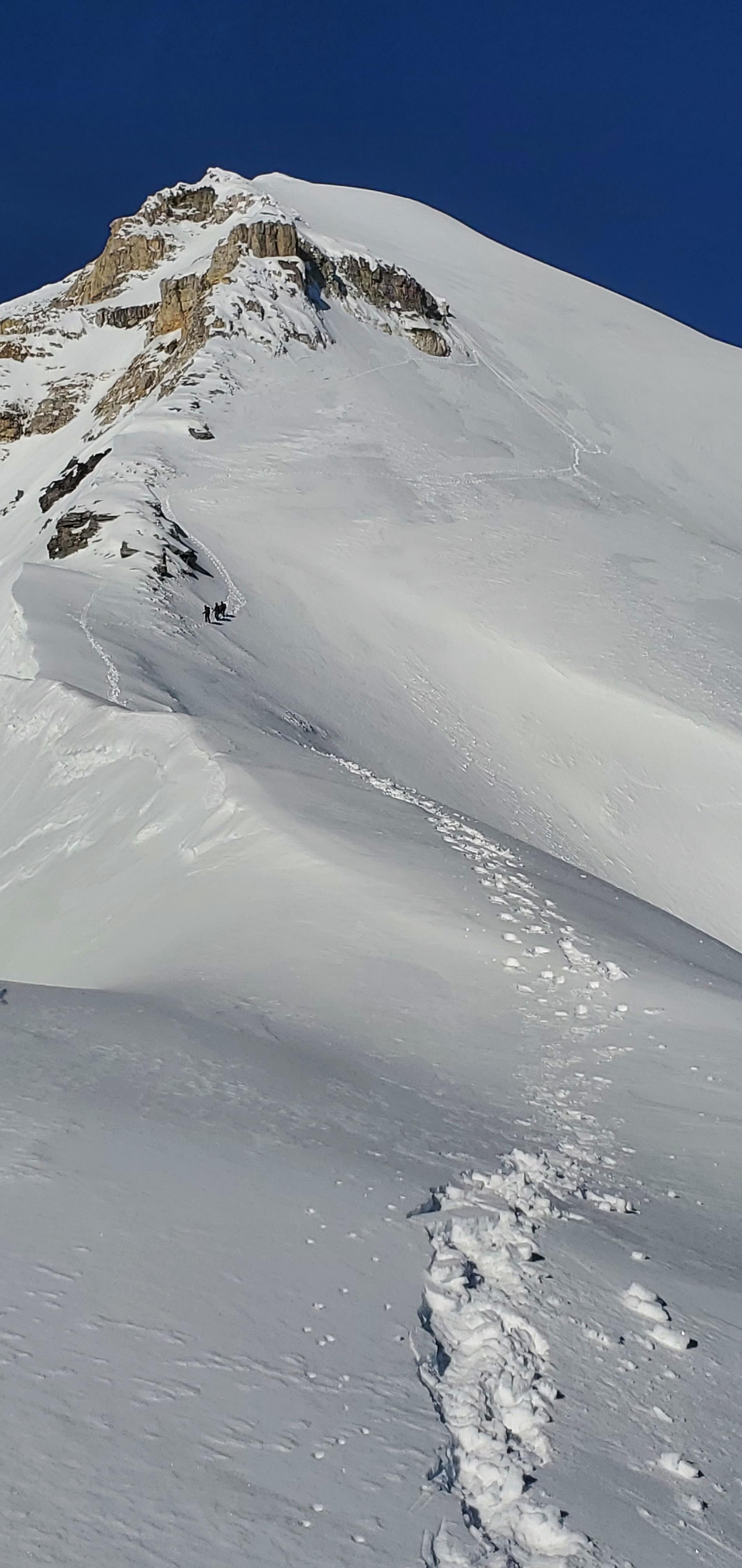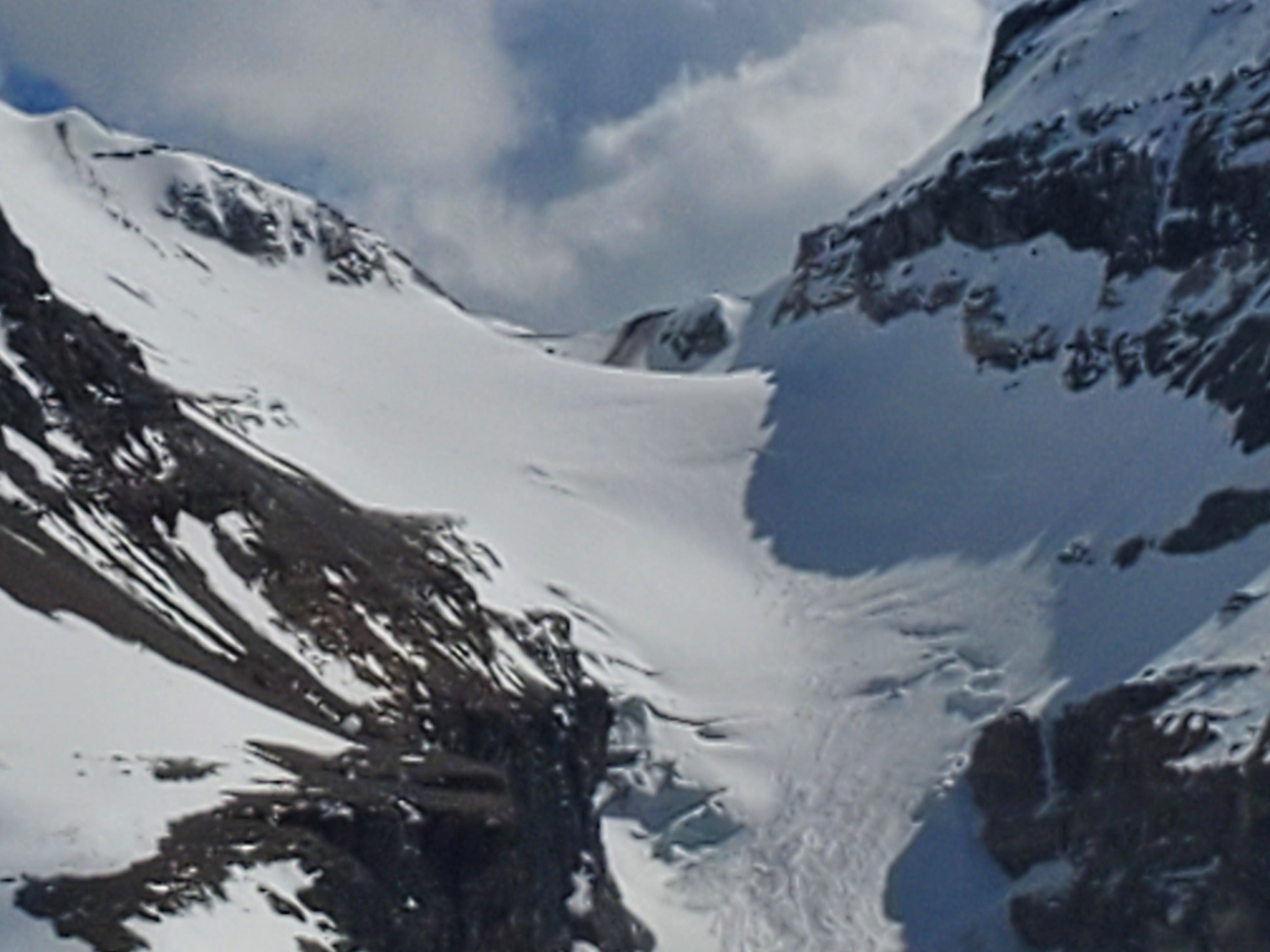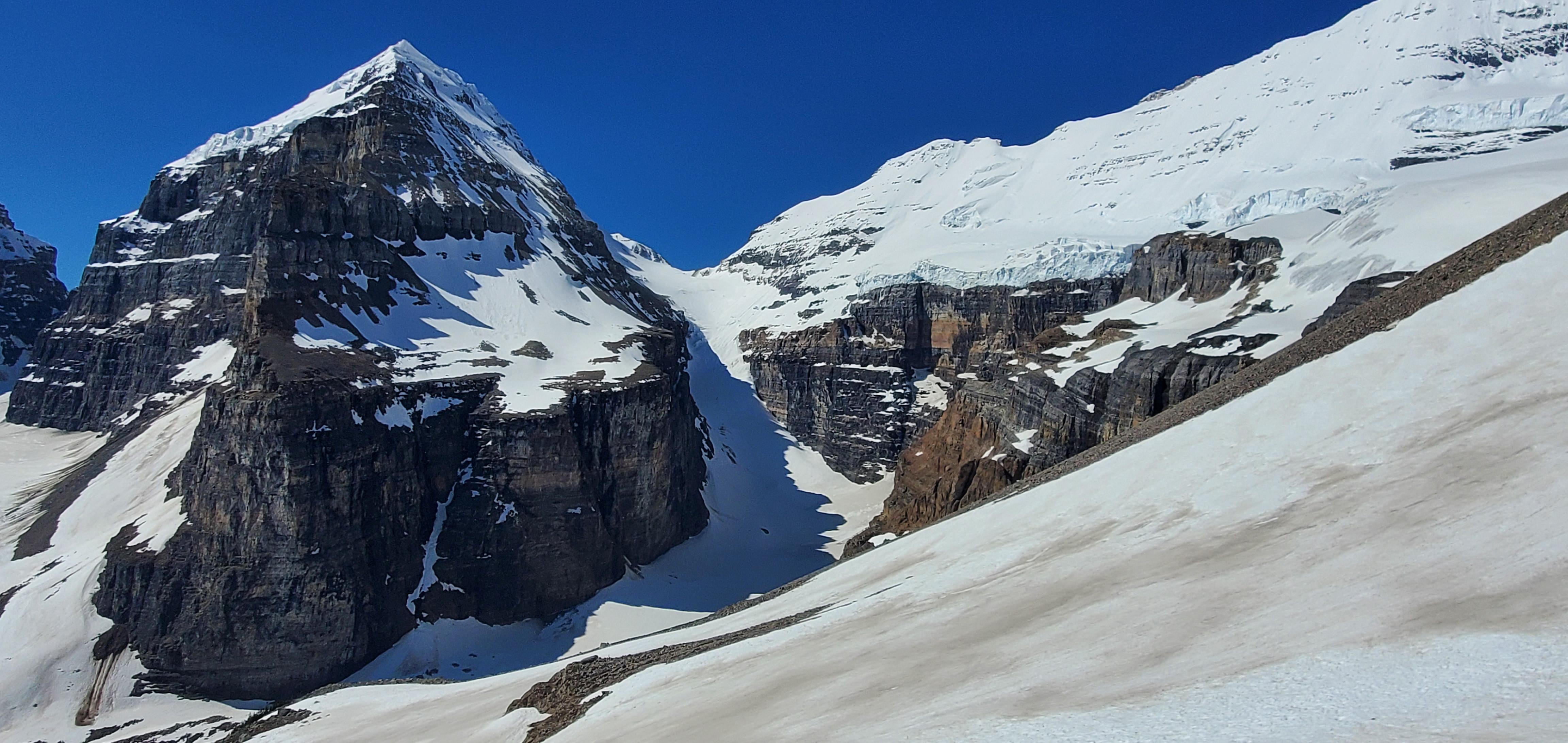On Saturday we headed up to the bivy site above the Plain of Six Glaciers tea house to climb Victoria N. summit. There were several patches of avalanche debris to cross but the snow covered trail started in earnest just below the tea house and the Swiss guides' trail to the bivy was mostly snow covered with the trail hard to even find at times.
The more wind sheltered bivy sites were still under deep snow but the ones on top were dry. There was a trickle of running water in the rocks just east of camp but be prepared to melt snow. Sun was off the bivy at 6:15 pm.
Despite +6 C temps in camp at 3 am Sunday the clear night provided a good radiant freeze and travel was fast and easy with a smooth, hard 15 cm crust. At the snow covered headwall below the col there were wet grains beneath this crust.
We didn't touch any rock the whole way to the summit, bypassing the rock step to the right (which was very snowy and iced up and looked time consuming). The peak was in the best, fastest climbing shape I've ever seen.
We were on the summit at 6:30 (-1.5 C) and off the headwall below the col before 9 am. The sun was baking things pretty good and had already broken down the crust on the steeper SE facing slopes to the looker's right of the nunatak by 9, making for arduous post holing. Once the crust broke down on the headwall I would be worried about loose wet avalanches with the wet grains I saw beneath.
From the bivy we could see helicopters long lining out parts of the Abbot Pass hut. All that seems to remain from this 100 year old Parks heritage site is the foundation and a big brown stain on the snow slope below. So sad.

